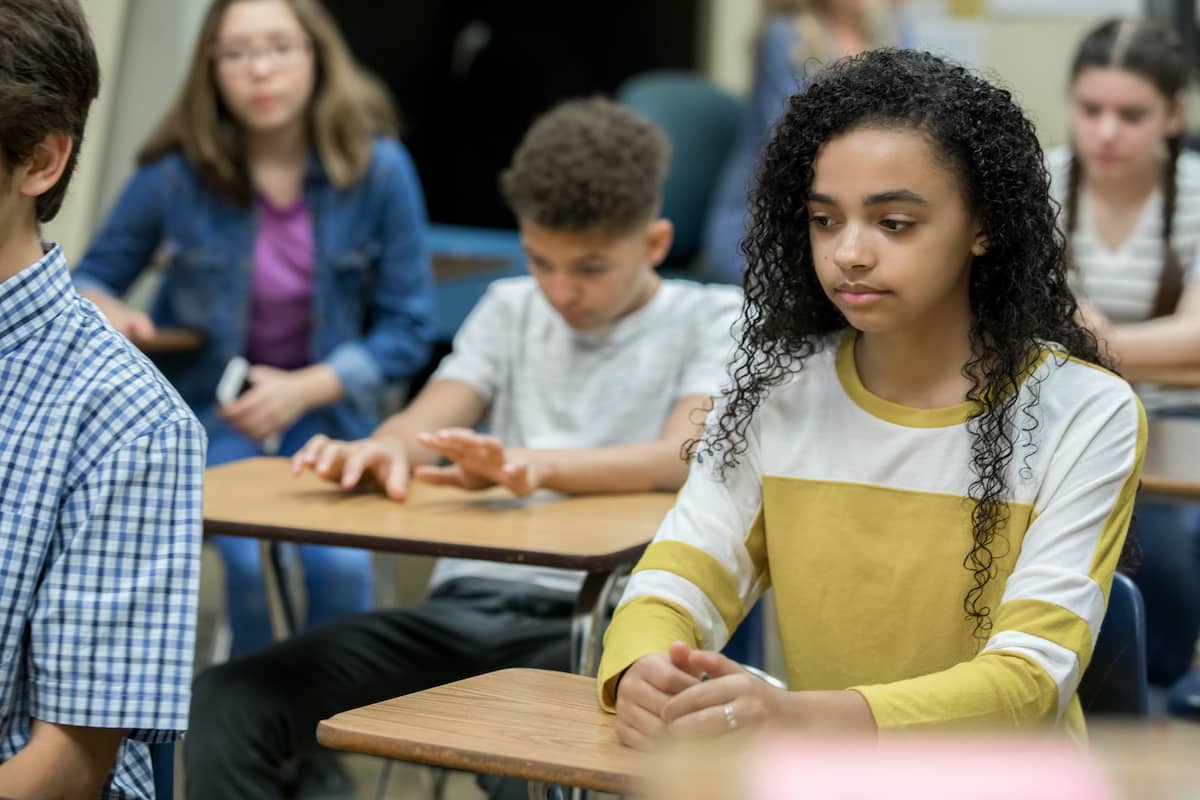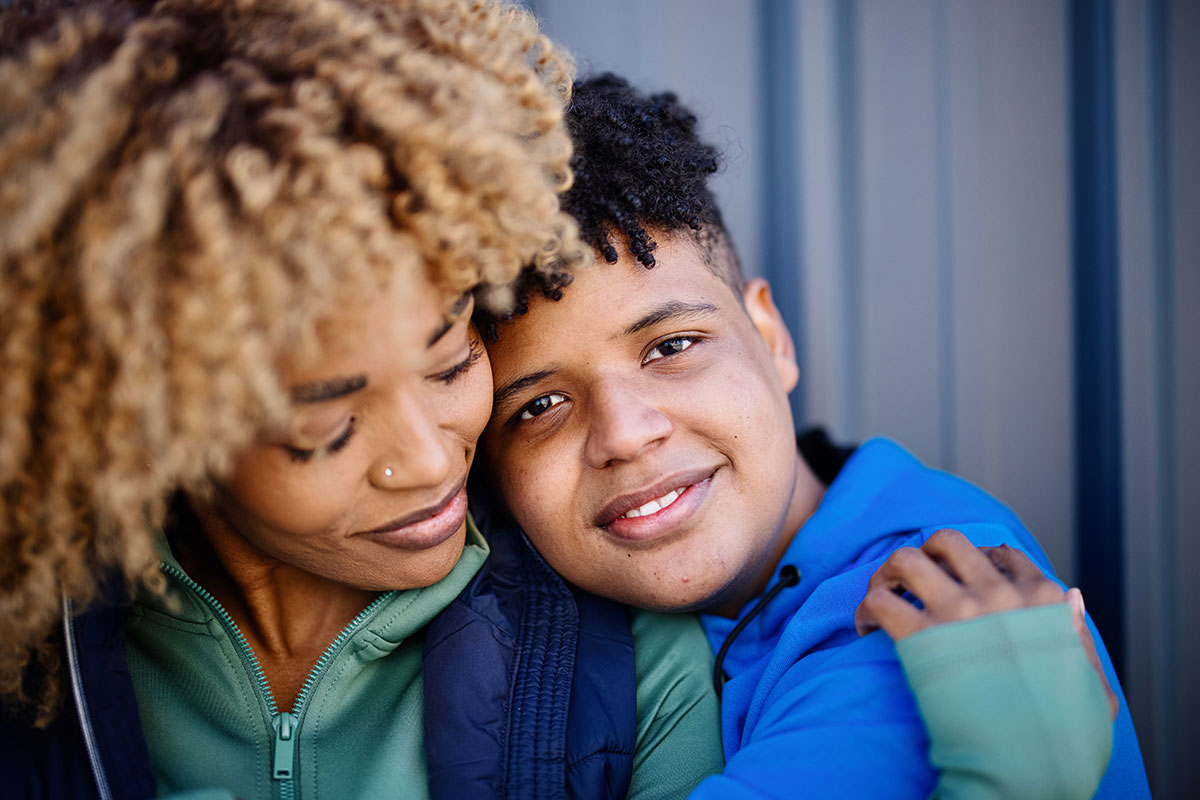Protecting kids from abuse is no easy task. Children face an ever-increasing number of threats to their well-being, and protecting children from abuse is more difficult than ever in the Internet age.
Unlike physical signs of abuse and maltreatment, which are more easily recognized, the signs of online sexual exploitation and abuse can be more difficult to identify.
It takes the focused efforts of compassionate caregivers, parents, and professionals who work with children to help identify and stop threats from online abusers.
Here’s what you need to know to protect our youth against the very real dangers of online sexual exploitation and abuse.
How Many Kids Use the Internet Daily?
Internet exposure brings a risk of online threats and predators. Unfortunately, this risk extends to most children across every age range. It should come as no surprise that teens have the most internet exposure — almost all teens use the internet daily, according to the PEW Research Center.
- 97% of all kids (ages 3-18) have home internet access
- 78% of children aged 9-11 use or interact with a tablet
- 62% of children aged 3-4 use or interact with a smartphone
- 49% of children aged 0-2 use or interact with a smartphone
- 40% of two-year-olds have their own tablet device
Online Dangers for Kids
As adults, we understand that internet usage is not without danger. We understand that scammers and criminals may be trying to download malware to our computers or access passwords or credit card information.
But for kids, understanding and identifying online dangers is more difficult. Malware can masquerade as a game, for example. Or the promise of winning free in-game points or real-life prizes could be enough to sway a young child to enter their mom’s bank card.
For teens, social media use and popular internet forums add another layer of concern with cyberbullying and mental health risks.
Nearly half of all teens report experiencing cyberbullying, including:
- Offensive name-calling
- Spreading of false rumors about them
- Receiving explicit images they didn’t ask for (cyberflashing)
- Being harassed about location or activities
- Physical threats
- Having explicit images of themselves shared without consent
Some of these activities, such as cyberflashing or the sharing of explicit images without consent, go beyond the boundaries of cyberbullying and veer into a different type of online risk:
Online sexual exploitation and abuse.
What is Online Sexual Exploitation and Abuse?
Online sexual exploitation and abuse (CSEA) includes a broad range of criminal acts that involve victimizing a minor for sexual gratification or some other personal or financial gain. Online CSEA takes many forms, including the creation and distribution of child sexual abuse material (CSAM), grooming, sextortion, and threats of self-harm, according to the Department of Homeland Security’s Know2Protect campaign.
Because this crime takes place online, it occurs all over the world and is a global epidemic. The National Center for Missing and Exploited Children (NCMEC) Cyber Tipline has received over 195 million reports related to CSAM since 1998.
According to the National Sexual Violence Research Center, forms of online sexual exploitation, harassment, and abuse include:
- Sending someone unwelcome communication about sex or hateful comments based on sex, gender identity, and/or sexual orientation.
- Sending partners, friends, acquaintances, or strangers unwanted requests for nude photos or video, or requests to livestream sexual acts.
- Performing sexual acts on a webcam without the consent of everyone involved or in inappropriate settings (like during an online class or online work meeting).
- Sharing private images or videos without the consent of everyone involved (also known as revenge porn or nonconsensual pornography — which, as of February 2021, is illegal in 46 states plus Washington, D.C.).
- Sharing porn in spaces where not everyone has consented to view it.
Online sexual abuse of a child includes various acts and situations where an adult contacts a child for sexual purposes.
This could include:
An adult engaging a child in a chat about sexual acts
- An adult grooming children to enable their sexual abuse, either online or offline
- An adult sending nude or pornographic images of themselves to a child or exposing themselves via live streaming
- Asking a child to view pornographic images/videos
- Asking a child to perform sexual acts, expose themselves, or share a sexual image
- Taking, making, sharing or showing indecent images of children
How Does Online Child Sexual Abuse and Exploitation Happen?
Investigators from Homeland Security Investigations warn that predators go where the kids are. In the past, that would’ve been public parks and playgrounds. Today, perpetrators of online CSEA find their victims on popular online gaming platforms and social media apps.
Online CSEA usually starts with online grooming, a process by which an online predator establishes a connection with a minor to gain their trust, gather personal information about them, desensitize them to sexual content by introducing sexually explicit conversation and pornographic images, and by exploiting any vulnerabilities the child may have.
Often, online predators pretend to be minors themselves to manipulate children into providing nude or partially nude images or videos of themselves.
They then use the material to coerce children and teens into sending more graphic content or money. This is known as sextortion.
There are two types of sextortion.
- Traditional sextortion occurs when an online predator threatens or blackmails a victim into providing sexually explicit content; the online predator threatens to share this content with the public.
- Financial sextortion occurs when a predator demands money or gift cards in exchange for keeping the victim’s sexual content private.
AI-Generated Abuse Materials on the Rise
According to the Internet Watch Foundation, which tracks down and removes abuse from the internet, there has been an 830% rise in online child sexual abuse imagery since 2014, and the prevalence of AI image generation tools is fueling this further.
NCMEC warns that AI can be utilized to create deepfake sexually explicit images and videos by using an innocent photograph of a real child to create a computer-generated one.
How Prevalent is Online Sexual Exploitation and Abuse?
Online CSEA is a global epidemic.
UNICEF reports that 80% of children in 25 countries report feeling in danger of sexual abuse or exploitation online.
In a Swedish study of children aged 14-15, 48% of girls and 18% of boys reported that unknown adults had made contact with them via the Internet and made a suggestion of a sexual nature.
Research from NCMEC revealed:
- Girls appear in the overwhelming majority of CSAM.
- Prepubescent children are at the greatest risk to be depicted in CSAM.
- When boys are victimized, they are much more likely than girls to be subjected to very explicit or egregious abuse.
- On average, boys depicted in CSAM are younger than girls and more likely to have not yet reached puberty.
Online CSEA Risk Factors
Researchers found that those most vulnerable to online sexual abuse and grooming tended to be high-risk youths with a prior history of sexual abuse. Also at higher risk were children who use chatrooms, communicate with people they’ve met online, engage in sexual behavior online, and share personal information online.
Child victims of online sexual abuse consistently show signs of posttraumatic stress disorder following the ordeal, which often includes control, permanence (the feeling that the abuse is never-ending), blackmail, re-victimization, and self-blame. The consequences of online sexual abuse are serious, and victims often need professional help.
How Can You Protect Kids from Online Sexual Exploitation and Abuse?
We all can play a role in protecting kids from predators seeking to abuse or exploit them sexually online. From parents and caregivers to the professionals who contact them daily, such as nurses, law enforcement, teachers, and volunteers, there are steps you can take to prevent, identify, report, and stop this form of child abuse in its tracks.
Parents
Parents who are vigilant about staying involved in their kids' online worlds can be the first line of defense against abuse and exploitation. DHS Know2Protect recommends parents take action to protect their children against online predators and threats:
- Start an open, two-way conversation with your child.
- Password-protect or control access to your child’s app store and gaming downloads.
- Set time and area limits for use of devices and set device check-in times.
- Set all apps, games, and devices to private.
- Turn off location data services on social media and nonessential apps.
- Talk about data permanency. Online data can last a lifetime.
- Create a safety contract with your child regarding online behavior.
- Know your child’s friend lists. Remove strangers.
- Warn your child that they should never leave a game to chat with someone they don’t know on a different platform.
- Do not delete messages, images, or videos from predators, and do not forward any sexually explicit images or videos. Save usernames, screenshots, and images or videos as evidence for law enforcement to collect directly from the device.
If an online predator is targeting your child, report it.
Call the Know2Protect Tipline: 833-591-KNOW (5669) or call 911 if your child is in immediate danger.
Mandated Reporters
Teachers, medical professionals, social workers, counselors, clergy, and volunteers are a few of the professionals who regularly come into contact with children. This is why many states place a legal duty on these professionals to report suspected instances of child abuse.
As a mandated reporter, you may be able to spot signs of abuse that a parent has missed and become a safety net for the children in your care.
Stay up-to-date with mandated reporter training. Training is available to help mandated reporters understand their duties as reporters and to identify signs of suspected abuse, including online sexual abuse. Training can help you know how to file a report of sexual abuse and what to do with that report so you can stop the abuse.
Watch for potential signs of online sexual exploitation, including changes in a child’s use of electronic devices, attempts to conceal online activity, withdrawn behavior, angry outbursts, anxiety, and depression.
Teachers may be in a particularly advantageous position to recognize signs of peer-to-peer online sexual exploitation or cyberbullying. You may notice a change in a student’s emotional state and friend group or pick up on conflict between students resulting from the sharing of explicit photo or video material, for example.
Protect Children From Exploitation and Abuse
We all have an obligation to protect the most vulnerable among us from abuse, online and offline. Child sexual exploitation and abuse is happening to an alarming percentage of children, and as more and more children use the internet to play games, connect socially, and do schoolwork, their risk continues to increase. Awareness of the issue is the first step to ensuring you can help keep children safe online. From here, you can take the steps necessary to prevent, report, and protect the children you care about from becoming victims of online CSEA.



